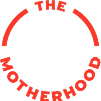Imagine the day when you tell your kids about times when intrusive ads covered websites and appeared before you watched videos online. This day could be sooner than you think.
Ad blocking is on the rise and promises continued growth, especially now that big players like Apple have entered the space. Ad blockers are applications that remove or filter advertisements on webpages. Consumers pay for these services in exchange for less cluttered pages, faster browsing and savings in power. After the release of iOS 9, the top paid apps in the Apple Store included these ad blockers.
Some facts about ad blocking:
- There are currently 198 million active ad block users around the world
- Ad blocking in the U.S. grew by 48% in just 12 months
- Oregon has the highest ad blocking rate at 16.4%
- Industries highest hit by ad blocking include gaming, social media and tech
- Mobile will facilitate future ad blocking growth

As ad blocking continues to grow, marketers are becoming concerned with the visibility of the online ads they are paying for. Website ads have been the go-to for online advertising because of their low cost and easy measurement. But with visibility as low as 44% on mobile and 52% on desktop, there is a need for an alternative.
Each U.S. Internet user is worth more than $215 a year in digital ad revenue, according to eMarketer stats, and desktop ad blocking is estimated to cost publishers $22 billion this year. Tech-savvy users who frequently browse online are estimated to be worth more than double the typical user; however, those are the same users who are more likely to use ad blocking apps.
Consumers are tired of intrusive ads, but they are also willing to accept the ads that are tailored for them and naturally fit into their browsing and social feeds. They don’t want to just see an ad for a stroller, for instance, when they are shopping around, but they want to know what others similar to them have experienced and suggested. Marketers now have an opportunity to provide value through naturally occurring online conversations, which aren’t blocked and are proactively sought out by consumers.
So instead of viewing ad blocking as a threat, innovative companies should see it as an opportunity to correct the imbalance, and shift the focus to where there is more value for the consumer-brand relationship. A great example of this is Yelp, who is transitioning advertising efforts to phase out display advertising and focus more on local. Yelp founder and CEO Jeremy Stoppelman stated, “While we recognize there’s a near-term impact on revenue, we believe this is the right decision for the long-term success of the company.”
What is your view on ad blocking? Is your company shifting with the industry?

